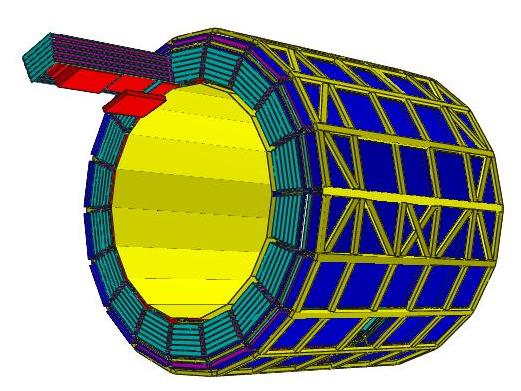Read more about the LHC experiments
The TRD of ALICE is composed of 540 detectors, arranged in 18 sectors in
azimuth, each of 5 stacks in longitudinal direction, with 6 layers per stack.
The diameter of the TRD cylinder is about 7 m and the length also 7 m.
It has more than 1 million channels of readout, each sampling the signal
in 20 time bins. The active gas is a xenon-CO2 mixture.
TRD performs electron identification and triggering on electrons and jets, providing a trigger decision in 7 microseconds.
Read more about
how it works.
